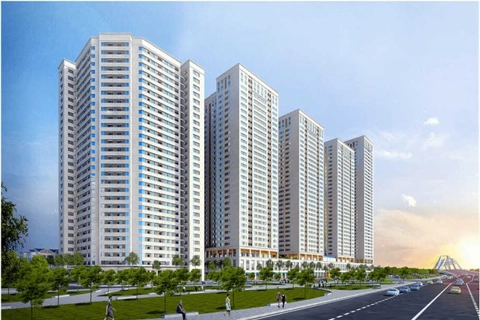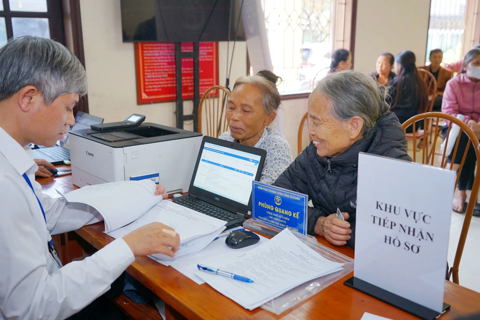Property
Hanoi: office competition is more and more heated up
Feb 13, 2017 / 05:06 PM
It is estimated that by the end of this year, Hanoi`s real estate market will have additional 200,000sq.m of offices for lease. The market segment for offices and retail space for lease in Hanoi is expected to become fiercely competitive as supply increases.
CBRE said last year, the total supply of office for rent was up to around 1.2 million sq.m including 65 percent of B-class offices. The rental price of the B-class offices was 17.8 USD per sq.m a month, posting a 0.6 percent year-on-year increase. That of A-class offices was 28.5 USD per sq.m a month, representing a 3 percent decrease from the previous year.
The rental price and occupancy rate of offices in the city’s centre has been at high level due to favourable locations and limited land funds. Companies with strong financial situations were ready to pay 30-40 USD per sq.m a month for A-class offices and 20-30 USD per sq.m a month for B-class offices excluding taxes and service fees. However, big areas in the centre area’s were hard to find.

Nguyen Hoai An, CBER’s deputy director, said that rental in the city’s centre was expected to increase due to limited supply, while the western area rents might sink due to abundant supply. Vietnam in general and the real estate market in particular are expected to attract foreign direct investment in the upcoming time thank to the advantages of stable politics, geographical location and human resources.
The positive signs of the economy could draw attention from foreign investors to the country and the capital markets, thus making demand of office for lease higher. Cushman & Wakefield said the competition in the market would be increased due to not only new projects but also to the increase of new types of offices such as co-working spaces and office-tel.
In term of retail space for lease, Hanoi has around 1.2 million sq.m, posting 10 percent increase from last year with the launch of two new commercial centres including Vincom Pham Ngoc Thach and Vincom Plaza Bac Tu Liem with a total of 45,900 sq.m.
The average rental price of the city’s commercial centres in the first quarter of the year was reduced by 7.6 percent from the previous quarter. According to Savills Vietnam, 12 new commercial centres with a total area of 158,000 sq.m are expected to be completed this year. All of the centres are located in the city’s outside centre area in Cau Giay, Thanh Xuan and Ha Dong district. Most of the projects have been integrated into residential complex.
The country opened its retail market under WTO’s commitments and has attracted foreign retailers, causing the fierce competition. Japanese, Thailand and Chinese retailers have expressed increasing attention to investments in Vietnam, showing strong development potential in the market despite competition.
The rental price and occupancy rate of offices in the city’s centre has been at high level due to favourable locations and limited land funds. Companies with strong financial situations were ready to pay 30-40 USD per sq.m a month for A-class offices and 20-30 USD per sq.m a month for B-class offices excluding taxes and service fees. However, big areas in the centre area’s were hard to find.

Nguyen Hoai An, CBER’s deputy director, said that rental in the city’s centre was expected to increase due to limited supply, while the western area rents might sink due to abundant supply. Vietnam in general and the real estate market in particular are expected to attract foreign direct investment in the upcoming time thank to the advantages of stable politics, geographical location and human resources.
The positive signs of the economy could draw attention from foreign investors to the country and the capital markets, thus making demand of office for lease higher. Cushman & Wakefield said the competition in the market would be increased due to not only new projects but also to the increase of new types of offices such as co-working spaces and office-tel.
In term of retail space for lease, Hanoi has around 1.2 million sq.m, posting 10 percent increase from last year with the launch of two new commercial centres including Vincom Pham Ngoc Thach and Vincom Plaza Bac Tu Liem with a total of 45,900 sq.m.
The average rental price of the city’s commercial centres in the first quarter of the year was reduced by 7.6 percent from the previous quarter. According to Savills Vietnam, 12 new commercial centres with a total area of 158,000 sq.m are expected to be completed this year. All of the centres are located in the city’s outside centre area in Cau Giay, Thanh Xuan and Ha Dong district. Most of the projects have been integrated into residential complex.
The country opened its retail market under WTO’s commitments and has attracted foreign retailers, causing the fierce competition. Japanese, Thailand and Chinese retailers have expressed increasing attention to investments in Vietnam, showing strong development potential in the market despite competition.








